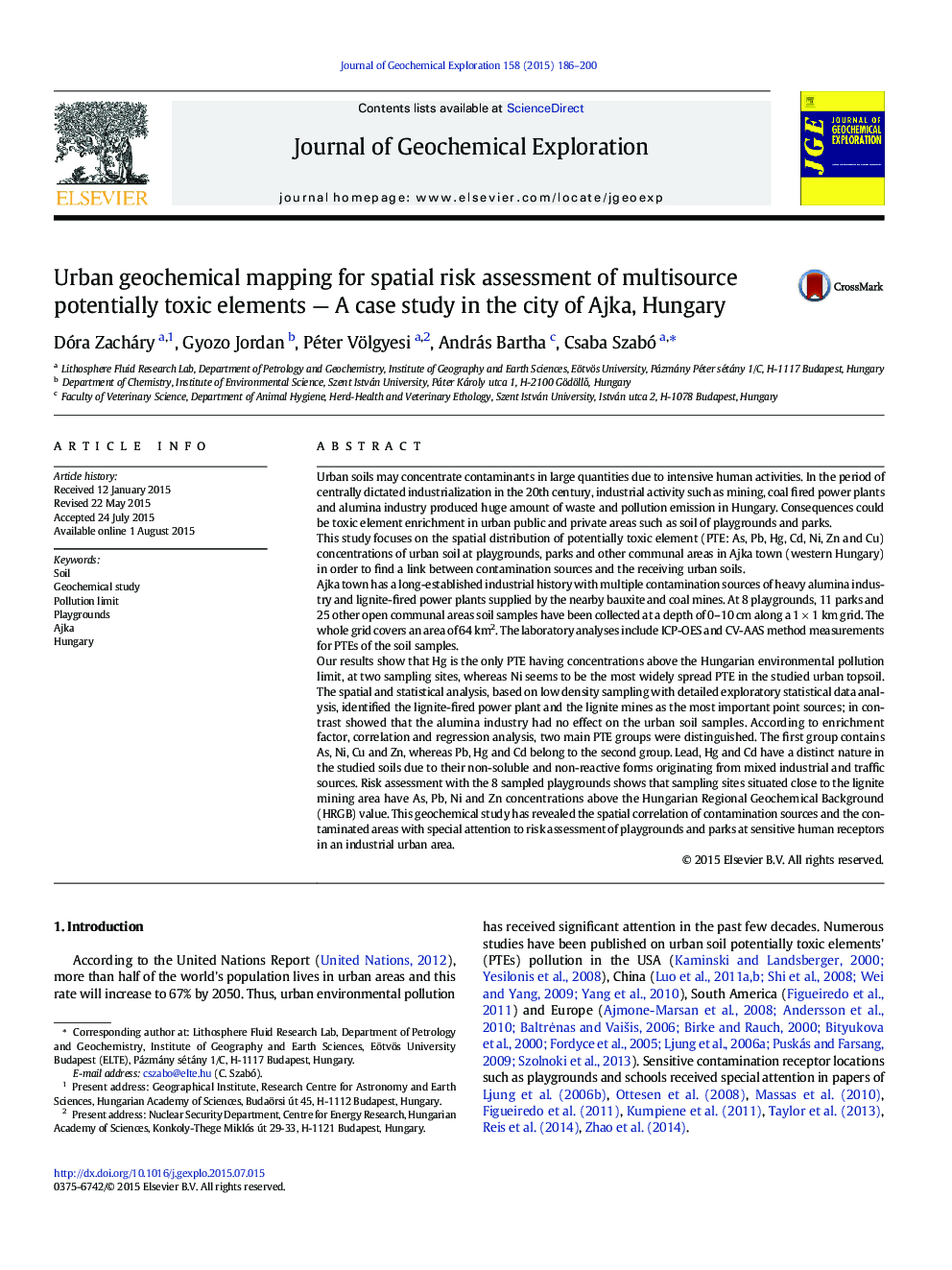| کد مقاله | کد نشریه | سال انتشار | مقاله انگلیسی | نسخه تمام متن |
|---|---|---|---|---|
| 4457036 | 1620901 | 2015 | 15 صفحه PDF | دانلود رایگان |
• Unique spatial urban geochemical study based on low-density urban soil sampling
• Contamination risk assessment at playgrounds as sensitive receptors
• Pollution sources identified: power plant, lignite mines; alumina plant: no effect
• Statistical modelling: two groups (As, Ni, Cu, Zn and Pb, Hg, Cd) were identified.
• Spatial modelling (trend analysis) revealed buried pollution source (lignite waste).
Urban soils may concentrate contaminants in large quantities due to intensive human activities. In the period of centrally dictated industrialization in the 20th century, industrial activity such as mining, coal fired power plants and alumina industry produced huge amount of waste and pollution emission in Hungary. Consequences could be toxic element enrichment in urban public and private areas such as soil of playgrounds and parks.This study focuses on the spatial distribution of potentially toxic element (PTE: As, Pb, Hg, Cd, Ni, Zn and Cu) concentrations of urban soil at playgrounds, parks and other communal areas in Ajka town (western Hungary) in order to find a link between contamination sources and the receiving urban soils.Ajka town has a long-established industrial history with multiple contamination sources of heavy alumina industry and lignite-fired power plants supplied by the nearby bauxite and coal mines. At 8 playgrounds, 11 parks and 25 other open communal areas soil samples have been collected at a depth of 0–10 cm along a 1 × 1 km grid. The whole grid covers an area of 64 km2. The laboratory analyses include ICP-OES and CV-AAS method measurements for PTEs of the soil samples.Our results show that Hg is the only PTE having concentrations above the Hungarian environmental pollution limit, at two sampling sites, whereas Ni seems to be the most widely spread PTE in the studied urban topsoil. The spatial and statistical analysis, based on low density sampling with detailed exploratory statistical data analysis, identified the lignite-fired power plant and the lignite mines as the most important point sources; in contrast showed that the alumina industry had no effect on the urban soil samples. According to enrichment factor, correlation and regression analysis, two main PTE groups were distinguished. The first group contains As, Ni, Cu and Zn, whereas Pb, Hg and Cd belong to the second group. Lead, Hg and Cd have a distinct nature in the studied soils due to their non-soluble and non-reactive forms originating from mixed industrial and traffic sources. Risk assessment with the 8 sampled playgrounds shows that sampling sites situated close to the lignite mining area have As, Pb, Ni and Zn concentrations above the Hungarian Regional Geochemical Background (HRGB) value. This geochemical study has revealed the spatial correlation of contamination sources and the contaminated areas with special attention to risk assessment of playgrounds and parks at sensitive human receptors in an industrial urban area.
Journal: Journal of Geochemical Exploration - Volume 158, November 2015, Pages 186–200
